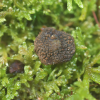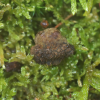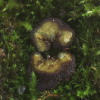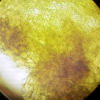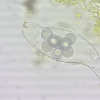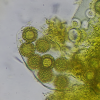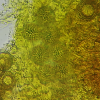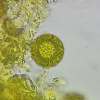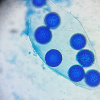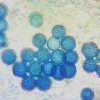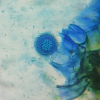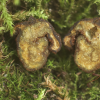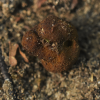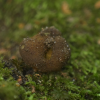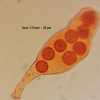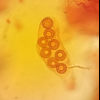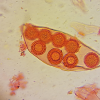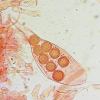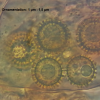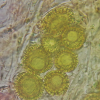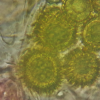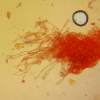
12-11-2025 09:25
 Viktorie Halasu
Viktorie Halasu
Hello, I need help with a pale terrestric Pseudom

11-11-2025 20:16
Bohan JiaHi, lastly I have found these tiny yellow decayin

09-11-2025 13:20
Hello.A tiny ascomycete, appearing as erupting gra

08-11-2025 00:29
 Francois Guay
Francois Guay
I found this species in Quebec, Canada, on herbace
Pachyphloeus citrinus ?
Ronald Morsink,
17-10-2021 10:15
In the Netherlands ik found this one on the side of a dry creek.
The size is about 1 cm. The trees around are picea, acer, quercus and alnus.
The hymenuim is yellow.
I don't think he's ripe yet. I don't know if the spores are ripe enough yet.
Spores: 11-14 mu without ornamentation.
In which direction should i llook ?
Regards,
Ronald Morsink
Nicolas VAN VOOREN,
17-10-2021 10:17

Re : Genea, Elaphomyces ?
This is a Pachyphlodes species.
Ronald Morsink,
17-10-2021 11:23
Ronald Morsink,
30-10-2021 20:05
Re : Genea, ?
Dear Nicolas Van Vooren,
I further examined the species microscopically and these are my findings. I used the book: FUNGHI IPOGEI D 'EUROPE.
I measured the asci: 130 µm - 180 µm long and 40 - 60 µm wide.
The spores are : 15-18 µm with ornamentation.
Ornamentation itself : 1 - 1,5 µm
The spores are arranged in the asci
The trees around are: Picea, quercus, fagus, acer and alnus.
The fruitbody: 1-1,5 cm.
I found another fruiting body and I think you can see the yellow between the warts here.
I think it could be Pachyphloeus citrinus.
I further examined the species microscopically and these are my findings. I used the book: FUNGHI IPOGEI D 'EUROPE.
I measured the asci: 130 µm - 180 µm long and 40 - 60 µm wide.
The spores are : 15-18 µm with ornamentation.
Ornamentation itself : 1 - 1,5 µm
The spores are arranged in the asci
The trees around are: Picea, quercus, fagus, acer and alnus.
The fruitbody: 1-1,5 cm.
I found another fruiting body and I think you can see the yellow between the warts here.
I think it could be Pachyphloeus citrinus.

